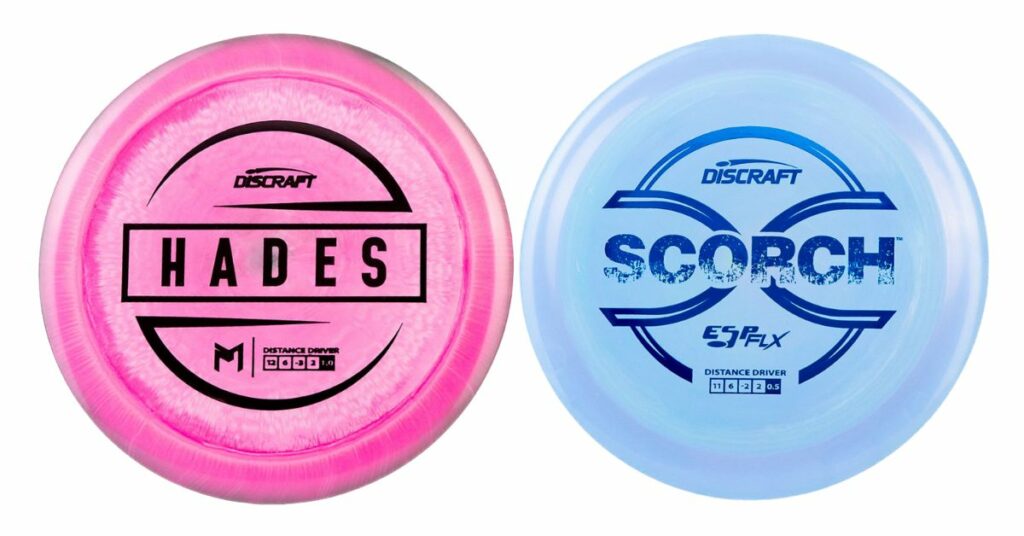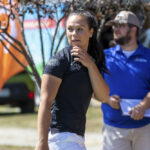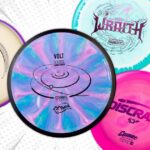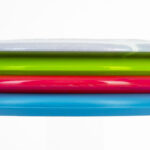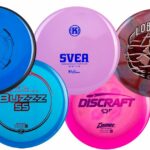There’s nothing quite like understable drivers. Once you’ve cracked a consistent 300+ of distance, for most people, these are your furthest flying and, let’s face it, the most fun discs to throw.
Let’s look at two relatively new and reasonably similar understable distance drivers from Discraft’s lineup and see which one will give you the flight you want to earn that spot in your bag.
Here’s my review of the Discraft Hades vs. Scorch.
The Bottom Line
- The Discraft Hades is an understable distance driver from the Paul McBeth line with tons of distance potential, as well as the ability to operate in the roller spot in the bag for big arms. It also is a complete tailwind bomber. This disc is a fantastic first high-speed driver for intermediate players.
Buy a Hades here. - The Discraft Scorch leans slightly towards being a neutral distance driver before beating in and offers more control and a more consistent flight. As it beats in, it will become flippier and generate more turn—another excellent choice for intermediate players, with a little more accessibility for beginners.
Buy a Scorch here.
Dimensions
The Scorch and the Hades have similar feels in the hand, but there are some minor differences between these two; here they are:
HADES
– Diameter: 21.0 cm
– Height: 1.6 cm
– Rim Depth: 1.1 cm
– Rim Width: 2.3 cm
SCORCH
– Diameter: 21.1 cm
– Height: 1.8 cm
– Rim Depth: 1.1 cm
– Rim Width: 2.2 cm
As you can see, the Hades is a little flatter and has a slightly wider rim. If you are used to throwing seven-speed and below discs, you may find the rim width to be a bit of a leap to the Hades, whereas the Scorch, even though it is a mere millimeter less wide, may feel slightly more comfortable, especially for smaller hands.
The Scorch, on the other hand, is a little more domey and will lead to easier-to-achieve glide. It’s important to note that specific runs will vary, and it wouldn’t be uncommon to find a pop-top Hades or a relatively flat Scorch, which will affect the flight accordingly.
Check out the full PDGA Discraft Hades dimensions here, and the Discraft Scorch dimensions here.
Flight Numbers
Hades
– Speed: 12.0
– Glide: 6.0
– Turn: -3.0
– Fade: 2.0
These flight numbers seem spot-on to me. The turn on these is no joke. If thrown on a moderate hyzer, the Hades will flip to flat and then begin banking to the right a fair amount before returning to flat and ultimately finishing to the left as the disc runs out of energy.
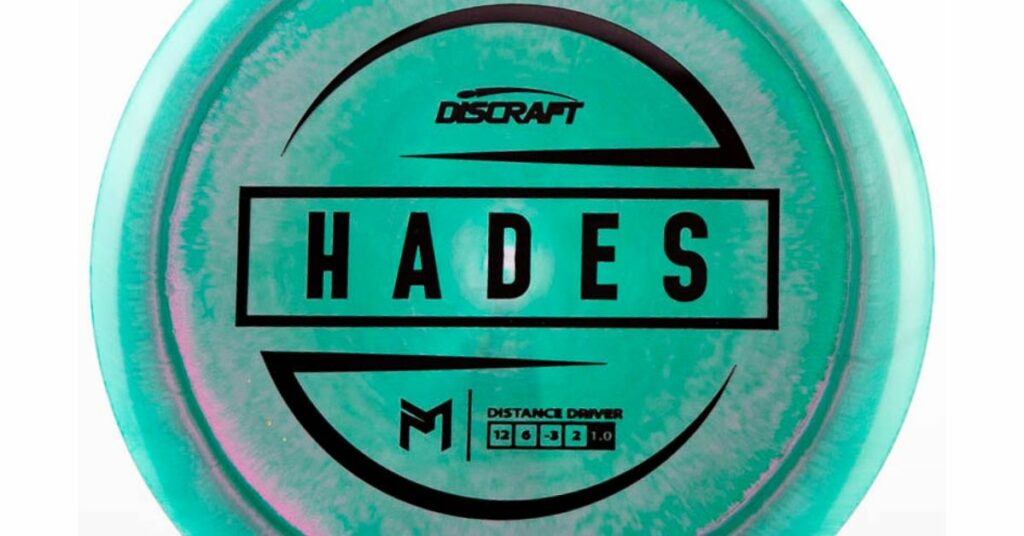
This disc will need to be thrown at a significant hyzer angle for hyzer flips, which can often be useful in wooded situations to get around an early obstacle. Thrown this way, the disc should rise slightly as it lifts to flat for most of its flight before once again finishing left with moderate vigor.
This disc is an excellent choice for a tailwind situation. The breeze will stabilize and allow it to maintain a straight flight while not fading out early as a neutral or overstable driver would. Conversely, I would only recommend this as a headwind option if a roller is the plan.
I recommend something more stable for forehand players who generate considerable power on their throws.
Scorch
– Speed: 11
– Glide: 6.0
– Turn: -2.0
– Fade: 2.0
They are similar numbers, with only the speed and turn to be a tick less than the Hades. This means that thrown at the proper pace; this disc will turn over to the right towards the start of the flight and fade back to the left towards the end, but with a narrower S-shape than the Hades. In other words, it is a more stable driver.
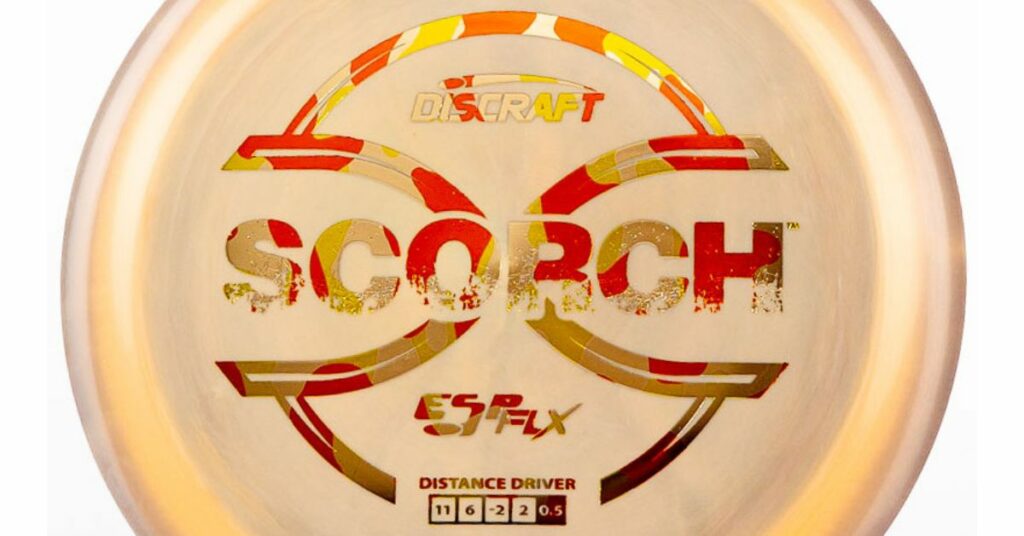
Also an excellent choice for hyzer flips, this disc will need to be thrown at a less severe angle to achieve the same flight, which can be more comfortable for many people.
As an 11-speed vs. the Hades’ 12, theoretically, the distance potential is slightly inferior, but for almost anything other than open field, long drive type shots, the difference in max distance is negligible. In fact, for some players, the distance will be easier to achieve and more dependable with the Scorch.
With similar numbers and flight paths to the Hades, the Scorch is not recommended for headwind situations and excels in tailwinds. I also would not recommend this for experienced forehand players, but it may be an option for newer sidearmers looking for a flex forehand flight.
Plastic Options
Scorch:
Z line (also Big Z)
This is the most overstable plastic available for the Scorch, beating in more gradually than other options. Z Line and Big Z are nearly identical plastics, with the Big Z having extra large stamps and a slightly opaque appearance. This is your best bet if you’d like your Scorch to maintain its neutrality for any extended period.
ESP
ESP plastic has excellent grip and performance in addition to lovely swirls. This plastic will beat in a bit faster than the Z or Big Z, so if you’re aiming to have this be more of a flippy option, ESP plastic is probably the best choice for you. Out of the box, this will fly true to the numbers and be very comparable to the Z line in flight.
ESP Flx
Discraft is doing away with its Z Flx plastic and has introduced the ESP Flx as its best all-season blend. This new plastic combines the gummy feel of the old Z-Flx with the sought-after swirls of the ESP. This will weather similarly to the ESP but will maintain its grippiness in colder weather.
Hades:
ESP (Paul McBeth line)
The Hades is another disc in the growing collection of the Paul McBeth line, including the Zeus, Malta, Anax, and Luna. The ESP plastic offers very aesthetically pleasing color swirls, excellent all-around grip, and durability. The Hades in this type of rubber will beat in over time, so if you’d prefer that or want something very pretty, this is likely the blend for you.
Big Z
If you’d prefer a touch more stability and for your disc to stay at its level of understability for longer, Big Z is the right choice. Z plastic is the most common choice of the pros, and Big Z offers the same feel with some big, funky stamps and a pearl-like finish.
Summary
It’s fair to say that both of these discs are bombers. They have similar levels of understability once beaten in and are both excellent hyzer flip options. The Hades offers the most overall distance potential, while the Scorch may be a touch more consistent and easier to pump out there; both fill a similar spot.
So what distinguishes one from the other?
The number one factor is that small but noticeable difference in the rim width. If you’re used to larger rims, the Hades will be comfortable, but if you are making the leap up to a full-speed driver and either have smaller hands or prefer the feel of a fairway driver, you may prefer the Scorch.
With that criteria in mind, I’d recommend either as a great choice for newer or intermediate players looking for their new max distance understable driver.
Lookin’ for a super overstable driver? Check out my Discmania Splice & Innova Firebird review!

